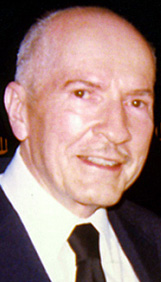
As a young science-fiction fan, I read several authors, and would often gravitate to a particular author at a time, reading almost everything they did, before I moved on. Often I wouldn’t follow on their later works.
One of these authors was Robert A. Heinlein (1907-88), one of the “grandmasters” of science fiction, and sometimes referred to as the “dean of science fiction.” Like many SF authors of the time, he got his start in the pulps, and was successful in leaving the “pulp ghetto” for better-paying markets, such as The Saturday Evening Post, and original books.
Heinlein is remembered from several bodies of work. There is his pulp SF, most of which is tied to his “Future History.” There is the later “juvenile SF” works from Scribner’s. There are the more modern novels, many of them with mature themes. He started off as a “hard SF” author, and later focused more on social themes.
I’m not certain what turned me on to reading him. I seem to think that reading an article on his “Future History” series in The Visual Encyclopedia of Science Fiction (1977) might have done it. I was soon getting collections of his works and then his juveniles, and enjoying them.
But as this blog is focused on pulps, we’ll mainly focus on his Future History series, which appeared in Astounding Science Fiction and a few other SF pulps starting in 1939.
These stories were later collected into several books. As the series was mainly short stories, the bulk of them were reprinted in The Past Through Tomorrow, which is where I got them all and read them. This book also includes a chart of the Future History series, which was first published in 1941. What was interesting is that Heinlein actually had plans for a handful of other works in the series that were never written.
The Future History series tells of the future of the United States, as it advances technologically, but then there is a rapid collapse followed by a theocratic dictatorship in 2012. There is later an overthrow of this, with the establishment of a free society. Parallel to this, it is later learned of a secret group of long-lived individuals, which came about through selective breeding, but it is thought they have a secret of immortality. They are forced to flee and only later return. The time period runs from 1939 to the 4000s.
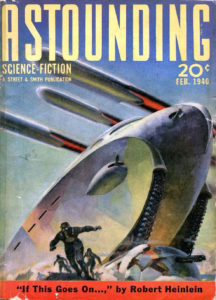 The series has some interesting stories. One is “The Roads Must Roll” from 1940, which tells of a future where fast-moving passenger conveyor belts are the main form of transportation. “If This Goes On…” (1940) tells of the future overthrow of the theocratic dictatorship. “Orphans of the Sky” (1941) is about a generation ship whose inhabitants no longer realize this, thinking their whole universe is the inside of the space ship. One man discovers this and tries to fix it, but is only able to get himself and a few companions off the ship to a new planet. There have been several later works that seem inspired by this idea. “The Man Who Sold the Moon” (1950) tells of the schemes of a businessman to be the first to land on and control the moon.
The series has some interesting stories. One is “The Roads Must Roll” from 1940, which tells of a future where fast-moving passenger conveyor belts are the main form of transportation. “If This Goes On…” (1940) tells of the future overthrow of the theocratic dictatorship. “Orphans of the Sky” (1941) is about a generation ship whose inhabitants no longer realize this, thinking their whole universe is the inside of the space ship. One man discovers this and tries to fix it, but is only able to get himself and a few companions off the ship to a new planet. There have been several later works that seem inspired by this idea. “The Man Who Sold the Moon” (1950) tells of the schemes of a businessman to be the first to land on and control the moon.
There are, of course, many other Heinlein works out there. During his lifetime he published 32 novels, 59 short stories, and several collections. Even since he passed, a few new works have emerged. A few movies and radio shows have been based on his works. I found I enjoyed most of his works up through the ’70s, but not much past that. I found it difficult to get into them at the time.
He did have certain themes in his works. His heroes were often competent and brave, and he often had strong female characters, often working with the hero as an equal, and in later works is the protagonist. Sexual freedom was a theme, and this became more pronounced in his later works, which I think turned some off.
While not strictly pulp, mention should be made of his juvenile novels. These were done on an annual basis through Scribner’s. This starts with Rocket Ship Galileo in 1947 through Have Space Suit— Will Travel in 1958. Starship Troopers was supposed to be the next one, but was rejected, and this ended the “series.” The later Podkayne of Mars is not part of the series, though some assume so. In addition to being aimed at adolescent boys, all have such boys as the main protagonists. Not connected, per say, these stories show mankind’s progression into space. I read these in high school with the new Del Ray editions with Darrel K. Sweet covers.
There are many other good Heinlein stories. Probably one of his most well-known is Stranger in a Strange Land. Most probably know him from the movie Starship Troopers, which is very loosely based on his work. The Moon Is a Harsh Mistress is also a classic, telling of a rebellion on the Moon against the repressive, absentee government that rules them. Heinlein is a complex character, and over time his works changed as he developed as a writer. But if you haven’t read him, do take the chance to do so. There is a lot to discover with him.

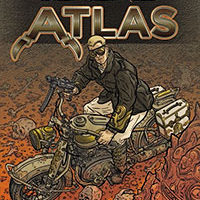
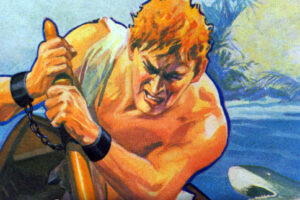
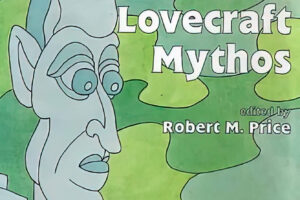
I got turned on to his work by a kindly librarian back in the 1950’s by pointing me to “Time For The Stars” and I was hooked. I began collecting Astounding when I learned that was where he got his start.
[…] (Pulp Net): As a young science-fiction fan, I read several authors, and would often gravitate to a particular […]
[…] (Pulp Net): As a young science-fiction fan, I read several authors, and would often gravitate to a particular […]